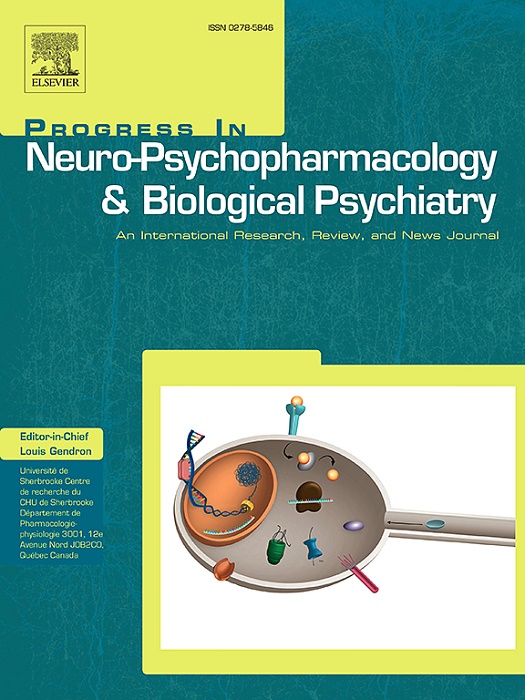Embryonic exposure of estrogen and BPA in zebrafish leads to ADHD-like and ASD-like phenotypes, respectively
IF 5.3
2区 医学
Q1 CLINICAL NEUROLOGY
Progress in Neuro-Psychopharmacology & Biological Psychiatry
Pub Date : 2025-02-26
DOI:10.1016/j.pnpbp.2025.111293
引用次数: 0
Abstract
Exposure to the estrogenic pollutant bisphenol A (BPA) during pregnancy and early childhood is a risk factor for numerous neurodevelopmental and psychiatric disorders in humans. To understand why early BPA exposure is associated with attention deficit hyperactivity disorder (ADHD) and autism spectrum disorder (ASD), we have analyzed a series of zebrafish behaviors, neurodevelopmental process, and gene expression profiles, after a moderate level of estrogen (17β-estradiol, E2, as a positive control) and BPA treatments during embryogenesis (2–48 h post fertilization). E2 exposure-caused hyperactivity was likely due to elevated expression of cyp19a1b since blocking aromatase activity rescued the defect. Furthermore, E2 exposure resulted in impulsive behaviors, perhaps due to a reduced expression of brain th (crucial for dopamine synthesis), resembling the ADHD phenotypes. However, the hyperactivity upon BPA exposure was due to a reduction of GABAergic neurons, particularly in the midbrain. BPA-exposed fish were less-social, with increased repetitive behaviors and escape rate (during strobe light stimulation), like the ASD phenotypes. Taking advantage of published single-cell and bulk RNA-sequencing data related to zebrafish BPA exposure, we uncovered that embryonic midbrain GABAergic neurons express less stmn1a upon BPA exposure. When stmn1a function was partially lost, 14-day post-fertilization larvae became less social, further stressing the ASD phenotype after BPA exposure. Upon embryonic E2 and BPA exposure, we have unexpectedly unveiled zebrafish ADHD-like and ASD-like phenotypes, respectively, suggesting that women of childbearing age should be cautious to use BPA and estrogen related products.
求助全文
约1分钟内获得全文
求助全文
来源期刊
CiteScore
12.00
自引率
1.80%
发文量
153
审稿时长
56 days
期刊介绍:
Progress in Neuro-Psychopharmacology & Biological Psychiatry is an international and multidisciplinary journal which aims to ensure the rapid publication of authoritative reviews and research papers dealing with experimental and clinical aspects of neuro-psychopharmacology and biological psychiatry. Issues of the journal are regularly devoted wholly in or in part to a topical subject.
Progress in Neuro-Psychopharmacology & Biological Psychiatry does not publish work on the actions of biological extracts unless the pharmacological active molecular substrate and/or specific receptor binding properties of the extract compounds are elucidated.

 求助内容:
求助内容: 应助结果提醒方式:
应助结果提醒方式:


